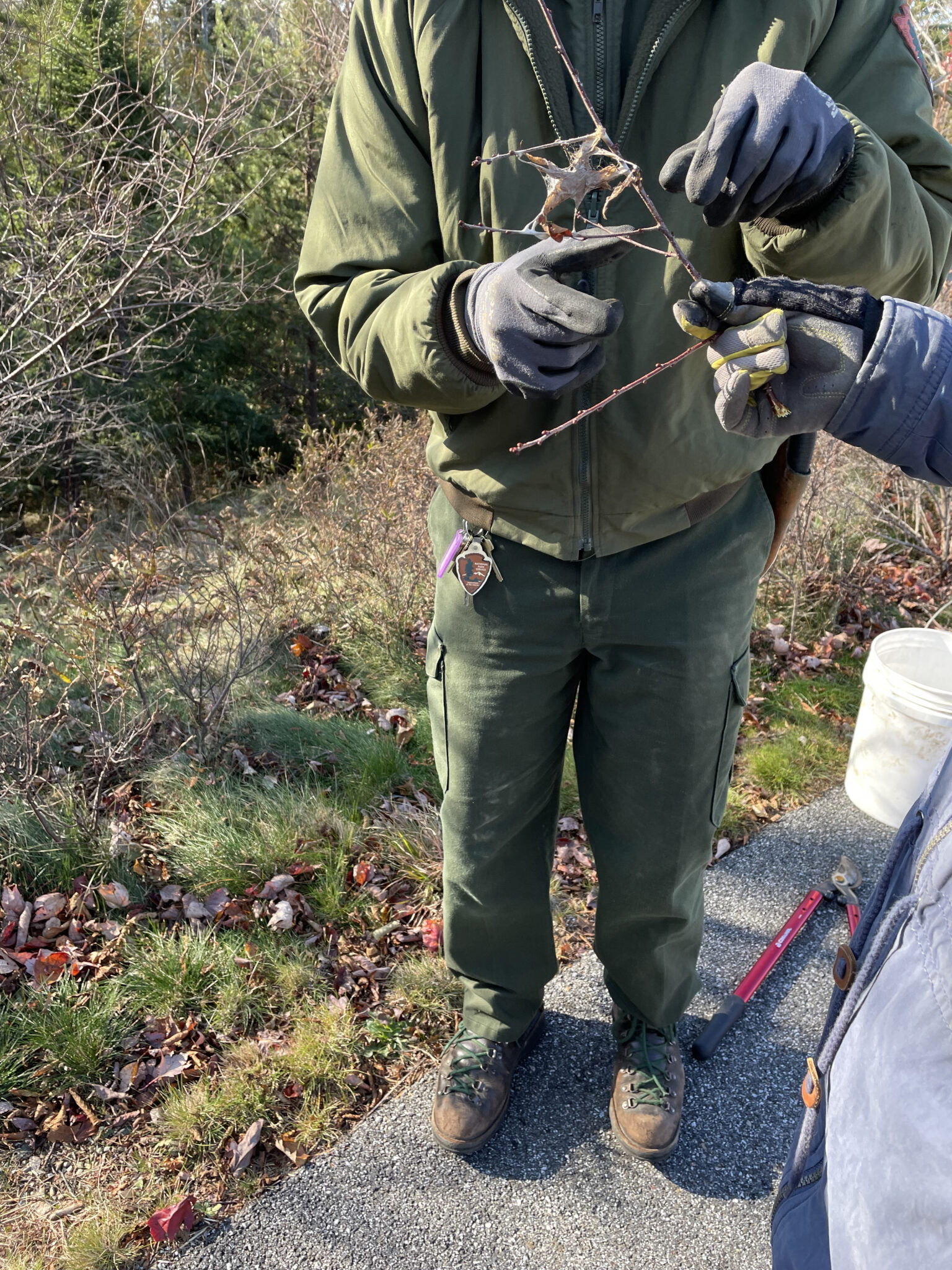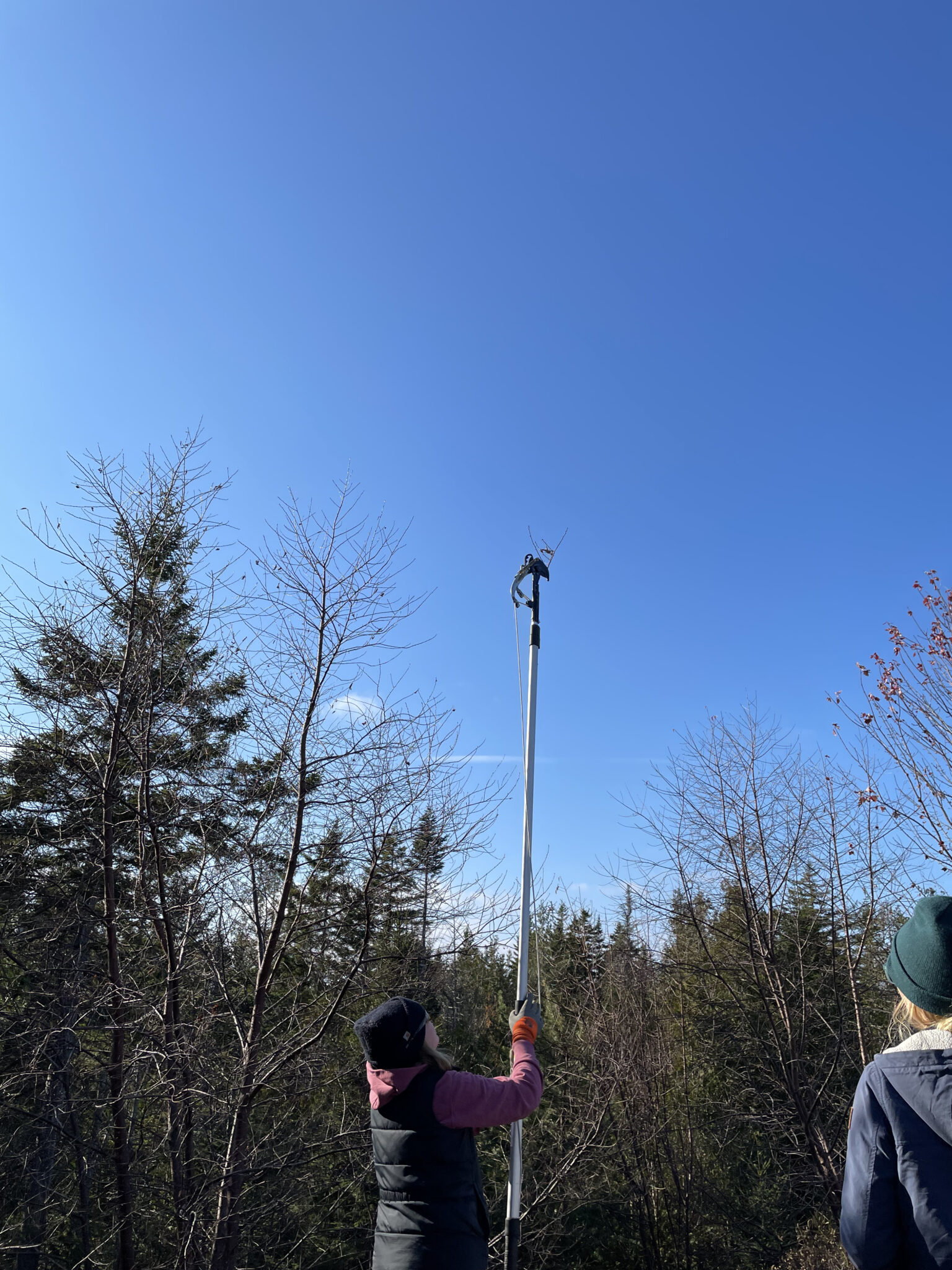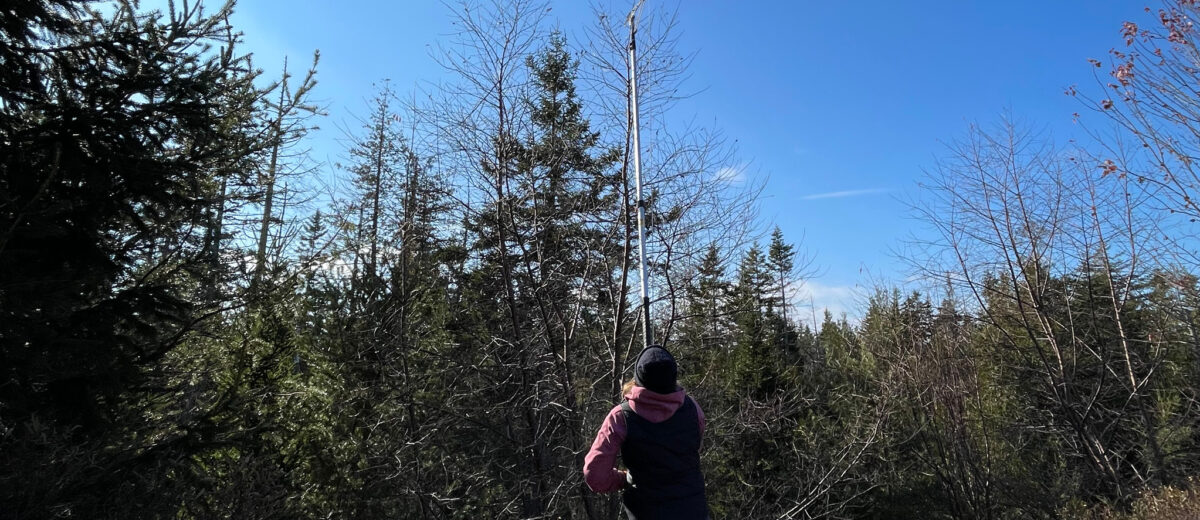A glimpse into non-native species management
story + photos by Catherine Devine, 2023 Cathy and Jim Gero Acadia Early-Career Fellow
 “Look up, at the tips of the branches,” Emma said, pointing to the tips of the barren oak tree far across the parking lot.
“Look up, at the tips of the branches,” Emma said, pointing to the tips of the barren oak tree far across the parking lot.
She circled the trunk, tracing the perimeter of the tree with her feet, eyes open and focused. “Sometimes, when the light hits the tree a certain way, you’ll see it.”
It was a Maine November, roughly 30 degrees, at the Schoodic Woods campground, our noses and cheeks all pink with near-winter’s sunburn. I was hunting for browntail moth webs with Acadia National Park’s Vegetation Crew, including Emma Lanning, a Biological Science Technician, and Vegetation Program Manager, Jesse Wheeler. I was told that the emptiness of late fall is perfect for browntail moth monitoring, making it harder for them to hide than in the green knit of summer. “Most of the leaves have dropped from their host trees. And so you can see the winter webs,” Jesse said.
Emma explained her thought process to me as she worked. “I like to look for a clump of leaves,” she said, turning to me, “like this one here.” She bent a thin wiry branch down to chest height, and pointed to the web on the tip of the branch – ooey and gooey,like a piece of ABC (already been chewed) gum.
“And then you just” – Emma snipped the tip branch off quickly with her clippers and placed her finding in a white bucket – “that’s pretty much it,” she told me.
“Browntail moths,” Jesse Wheeler explained, “have these stinging hairs. They’re toxic and stinky and have the ability to stick into your skin and create a rash similar to poison ivy. They’re a human health hazard.”
Browntail moths spin their winter webs in early fall. Each web can contain anywhere from 25 to 400 caterpillars, and remain firmly attached to twigs or small branches through the winter and early spring – when they hatch and begin the cycle again, spreading their tiny toxic hairs and associated itch with it.
“So this is why this time of year, between now and April, really is a good time to manage for them because they’re holed up in their webs. They’re not going anywhere. So they’re in a package deal,” Jesse said, explaining the park’s process for removing them. “We have some hand loppers, we have pole pruners. And we put them in a bucket and then fill it with soapy water overnight. And so we kind of get rid of them that way.”
It’s a fall tradition. Every November the Vegetation Crew searches heavily trafficked areas within the park for the telltale webs. They try to remove as many of them as they can, to prevent them from wreaking havoc on next year’s summer vacations.
Emma led the charge and we all followed. She glanced at the coordinates she had stored in her phone that identified all the places the moths were spotted last year. “Let’s check out by the amphitheater,” she said.
The Vegetation Crew will be back next year to do it all again. And browntail moth is just a drop in the ocean. Some 234 areas of Acadia National Park have non-native animals that need to be monitored and managed. That’s how non-native species management tends to go, an endless cycle of monitoring and managing and monitoring, again and again and again.
The crew continued on towards the amphitheater. “After this, let’s do the pear trees,” Jesse said, referring to the non-native plant that needs to be removed in the parking lot.

